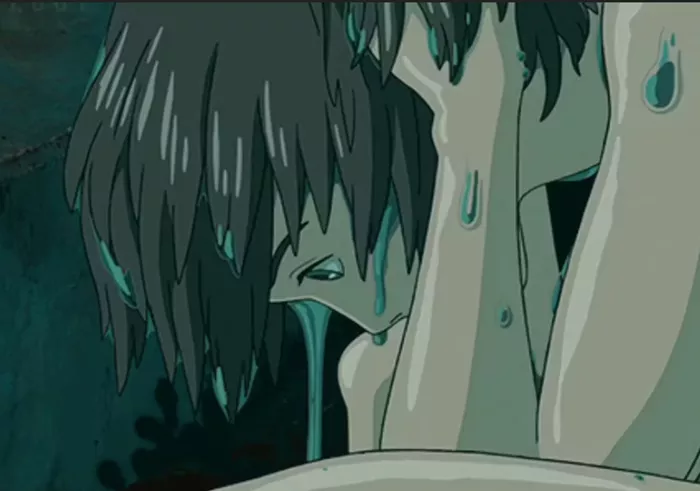In Hayao Miyazaki’s acclaimed film “Howl’s Moving Castle,” based on the novel by Diana Wynne Jones, one of the most memorable scenes is when the enigmatic wizard Howl becomes slimy and almost grotesque. This transformation is rich with symbolic meaning and provides deep insights into Howl’s character. In this article, we will explore the reasons why Howl becomes slimy, delving into the narrative and symbolic significance within the context of the story.
Understanding Howl’s Character
The Enigmatic Wizard
Howl Jenkins Pendragon, the protagonist of “Howl’s Moving Castle,” is a powerful and mysterious wizard known for his striking appearance, charming demeanor, and elusive nature. Despite his outward confidence and flamboyant personality, Howl harbors deep-seated insecurities and fears, which are pivotal to understanding his transformation.
Howl’s Vanity
One of Howl’s defining traits is his vanity. He is excessively concerned with his appearance, using magic to maintain his handsome looks. This obsession with his physical image is a manifestation of his deeper insecurities and fear of facing his true self.
Fear of Commitment
Howl’s reluctance to commit and take responsibility is another critical aspect of his character. He avoids conflicts and entanglements, preferring to remain free from any obligations that might tie him down. This fear of commitment is symbolized by his tendency to run away from difficult situations and his attempts to avoid the war raging in the background of the story.
The Transformation Scene
The Cause of the Transformation
The scene where Howl becomes slimy occurs after Sophie, the story’s heroine, rearranges his potions and toiletries, mistakenly believing she is helping him. When Howl discovers this, he becomes distraught and enters a state of despair, leading to his slimy transformation. This moment is a critical turning point in the film, revealing much about Howl’s inner turmoil.
See Also: Did Nami Forgive Sanji?
The Physical Change
Howl’s physical transformation into a slimy, grotesque figure is both shocking and symbolic. His beautiful exterior melts away, replaced by a monstrous form that reflects his inner chaos and emotional distress. The transformation is temporary but significant, offering a glimpse into the true nature of Howl’s struggles.
Symbolic Meaning of the Transformation
Insecurity and Self-Image
Howl’s transformation into a slimy creature symbolizes his deep-seated insecurities and his fragile self-image. His reliance on his outward appearance to mask his inner fears is laid bare when his beauty is stripped away, revealing the vulnerability and turmoil beneath. This moment highlights the theme of self-acceptance and the dangers of vanity.
Emotional Breakdown
The slimy transformation also represents an emotional breakdown. Howl’s distress over the rearrangement of his personal items triggers a collapse, illustrating how fragile his composure is. This breakdown is a manifestation of his inability to cope with his emotions and responsibilities, further emphasizing his fear of facing reality.
The Burden of War
In the broader context of the story, Howl’s transformation can be seen as a metaphor for the toll that the ongoing war takes on individuals. Howl, who tries to avoid the war and its consequences, cannot escape the emotional and psychological burden it imposes. His slimy state reflects the inner conflict and despair that he experiences as he grapples with the realities of the world around him.
The Role of Sophie
Sophie’s Influence
Sophie plays a crucial role in Howl’s journey toward self-acceptance and responsibility. Her presence in his life challenges him to confront his fears and insecurities. By inadvertently causing his transformation, Sophie becomes a catalyst for change, forcing Howl to face his inner demons.
Symbol of True Beauty
Sophie herself undergoes a transformation throughout the story, shifting between her young and old forms. Her character represents true beauty, which comes from within, rather than outward appearances. This contrast between Sophie and Howl highlights the central theme of the story: that true beauty and strength come from self-acceptance and inner character.
The Broader Themes
The Futility of Vanity
Howl’s obsession with his appearance and subsequent transformation illustrate the futility of vanity. The film suggests that relying on outward beauty to define oneself is ultimately hollow and can lead to a crisis of identity. True strength and beauty come from embracing one’s true self, flaws and all.
Growth and Responsibility
Howl’s journey is one of growth and accepting responsibility. His slimy transformation serves as a metaphor for his need to confront his fears and take responsibility for his actions and the world around him. It is only through this process that he can find true freedom and peace.
The Impact of War
The ongoing war in the background of “Howl’s Moving Castle” serves as a constant reminder of the chaos and destruction that looms over the characters. Howl’s attempts to avoid the war and its consequences reflect the larger theme of escapism versus facing reality. His transformation underscores the inevitable impact of war on individuals, regardless of their attempts to remain detached.
Howl’s Redemption
Acceptance and Change
By the end of the story, Howl begins to accept himself and his responsibilities. His relationship with Sophie helps him to see beyond his vanity and embrace his true self. This acceptance is crucial for his redemption and the resolution of his inner conflicts.
Finding Inner Peace
Howl’s journey towards self-acceptance and taking responsibility leads him to find inner peace. His transformation back from the slimy state symbolizes his progress in overcoming his insecurities and fears. This journey is a testament to the power of love and acceptance in achieving personal growth.
Conclusion
Howl’s transformation into a slimy creature in “Howl’s Moving Castle” is a multifaceted symbol of his inner turmoil, insecurities, and the emotional burden he carries. It serves as a powerful narrative device to explore themes of vanity, responsibility, and self-acceptance. Through his relationship with Sophie and his journey towards embracing his true self, Howl ultimately finds redemption and inner peace. This transformation scene is a poignant reminder of the importance of facing one’s fears and the strength that comes from self-acceptance and love.

